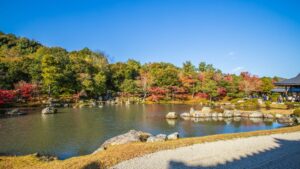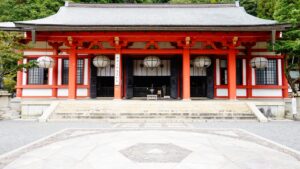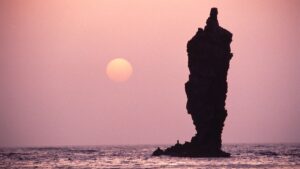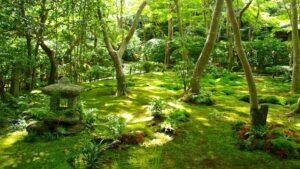Engakuji Temple: A Monument to Japan’s Victory Aginst the Mongols
Engakuji Temple, ranked second among the Five Great Zen Temples of Kamakura, is located near Kitakamakura Station. It was founded in 1282, a year after Regent Hojo Tokimune overcame two Mongol invasions, intending to protect the nation, promote Zen teachings, and mourn for all war victims on both sides. Upon entering through the Sanmon gate, […]
Eiheiji Temple, Training Center of Soto Zen Buddhism
Eiheiji Temple located deep in mountains is a training center of Soto Zen. You will confront yourself through Zazen Meditaion and also daily practices.
Tenryuji Temple, Shogun Ashikaga Takauji Mourned Emperor Go-Daigo
Located at Arashiyama, Shogun Ashikaga Takauji built Tenryuji Temple to mourn Emperor Go-Daigo. Sogen pond garden and Could Dragon painting are specutacler.
Chion-in Temple, Honen's Teaching to Save the People
Chion-in Temple, the head temple of the Jodo sect, is located at the foot of Mt. Higashiyama in Kyoto, built by Tokugawa Ieyasu (1543-1616, 徳川家康) by allotting the temple grounds of Shorenin Monzeki. Hidetada, Ieyasu's successor, donated to the construction of the temple gate, known as Sanmon (三門) or the Three Gate, the largest gate […]
Kyoto Imperial Palace, Successive Emperor's Residence
The Heian-kyo had been the center of the nation where the successive emperors resided for over 1200 years since the capital relocation from Nara in 794 by the 50th Emperor Kanmu until 1869 when Emperor Meiji moved to Tokyo, one year after the Meiji Restoration. The highlight is the beautiful Shishinden Hall with its cypress […]
Honpoji Temple, The Precursor of the Rimpa School, Hon'ami Koetsu's World of Faith and Beauty
The tender green of the trees from outside is reflected on the polished stone floor at Honpoji Temple in Kyoto. The colors shimmer on the black surface and create a tranquil atmosphere. It’s incredibly beautiful. Honpoji Temple stands as one of the temples within the Nichiren Sect of Buddhism, established by Priest Nisshin during the […]
Kuramadera Temple's Power Contributed Minamoto Yoshitsune to Winning the Genpei War
Kuramadera Temple, nestled deep in Mt. Kurama in the northern part of Kyoto, is renowned for its vortexes and the breathtaking natural beauty of trees that have grown over the years. Upon passing through the Niomon Gate, a meandering path guides visitors to the main hall. In the Heian period (794-1185), the esteemed female writer […]
The Oki Islands, The Exile of Emperor Go-Toba by Samurai: A Political Drama in Medieval Japan
A 50-minute flight from Itami Airport in Osaka, the Oki isolated Islands in Shimane Prefecture, a UNESCO World Geopark, are blessed with abundant nature. Since ancient times, the islands have been called the "Islands of the Deities." Japan's oldest books, Kojiki and Nihonshoki, describe the creation of the Oki Islands by two deities, Izanagi and […]
Yoshino Jingu Shrine and Yoshimizu Shrine: The Heart of the Southern Court, Dedicated to Emperor Go-Daigo
In spring, Mt. Yoshino is adorned with approximately 30,000 cherry blossoms in full bloom, comprising about 200 different varieties of Yamazakura, mountain cherry blossoms, gradually reach full bloom in four areas - Shimo, Naka, Kami, and Oku – ascending from the base to the summit, taking about a month to unfold fully. The panoramic view […]
Saihoji (Moss Temple): The pinnacle temple created by Zen Priest and Garden Designer, Muso Soseki
The ultimate beauty of nature's formations Saiho-ji, a UNESCO World Heritage Site, known as the Moss Temple, is a Rinzai Zen Buddhist temple that held a special place in Steve Jobs’ heart, drawing him to visit it several times. This enchanting temple boasts a 5,000 square meter garden adorned with approximately 120 distinct varieties of […]










